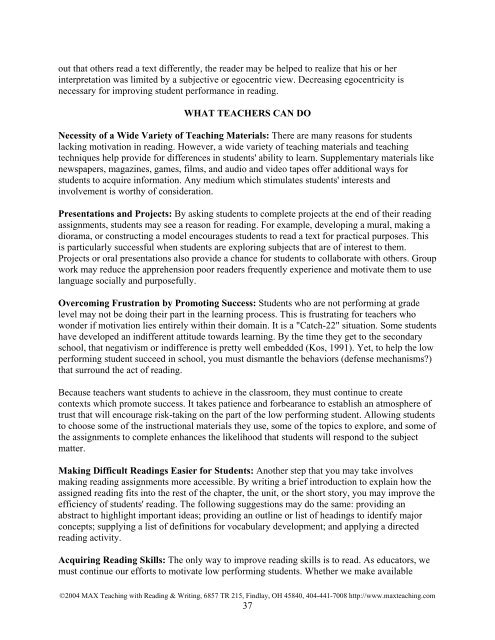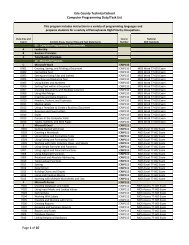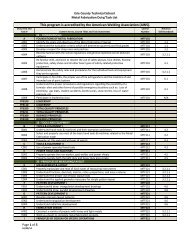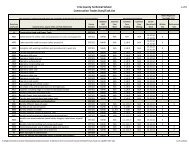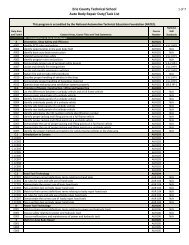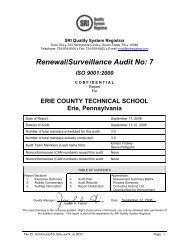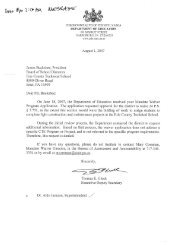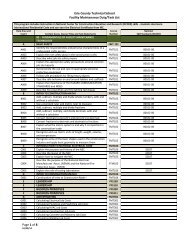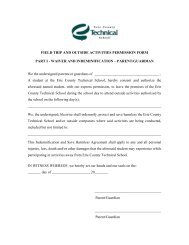MAX Teaching with Reading and Writing - Ects.org
MAX Teaching with Reading and Writing - Ects.org
MAX Teaching with Reading and Writing - Ects.org
You also want an ePaper? Increase the reach of your titles
YUMPU automatically turns print PDFs into web optimized ePapers that Google loves.
out that others read a text differently, the reader may be helped to realize that his or herinterpretation was limited by a subjective or egocentric view. Decreasing egocentricity isnecessary for improving student performance in reading.WHAT TEACHERS CAN DONecessity of a Wide Variety of <strong>Teaching</strong> Materials: There are many reasons for studentslacking motivation in reading. However, a wide variety of teaching materials <strong>and</strong> teachingtechniques help provide for differences in students' ability to learn. Supplementary materials likenewspapers, magazines, games, films, <strong>and</strong> audio <strong>and</strong> video tapes offer additional ways forstudents to acquire information. Any medium which stimulates students' interests <strong>and</strong>involvement is worthy of consideration.Presentations <strong>and</strong> Projects: By asking students to complete projects at the end of their readingassignments, students may see a reason for reading. For example, developing a mural, making adiorama, or constructing a model encourages students to read a text for practical purposes. Thisis particularly successful when students are exploring subjects that are of interest to them.Projects or oral presentations also provide a chance for students to collaborate <strong>with</strong> others. Groupwork may reduce the apprehension poor readers frequently experience <strong>and</strong> motivate them to uselanguage socially <strong>and</strong> purposefully.Overcoming Frustration by Promoting Success: Students who are not performing at gradelevel may not be doing their part in the learning process. This is frustrating for teachers whowonder if motivation lies entirely <strong>with</strong>in their domain. It is a "Catch-22" situation. Some studentshave developed an indifferent attitude towards learning. By the time they get to the secondaryschool, that negativism or indifference is pretty well embedded (Kos, 1991). Yet, to help the lowperforming student succeed in school, you must dismantle the behaviors (defense mechanisms?)that surround the act of reading.Because teachers want students to achieve in the classroom, they must continue to createcontexts which promote success. It takes patience <strong>and</strong> forbearance to establish an atmosphere oftrust that will encourage risk-taking on the part of the low performing student. Allowing studentsto choose some of the instructional materials they use, some of the topics to explore, <strong>and</strong> some ofthe assignments to complete enhances the likelihood that students will respond to the subjectmatter.Making Difficult <strong>Reading</strong>s Easier for Students: Another step that you may take involvesmaking reading assignments more accessible. By writing a brief introduction to explain how theassigned reading fits into the rest of the chapter, the unit, or the short story, you may improve theefficiency of students' reading. The following suggestions may do the same: providing anabstract to highlight important ideas; providing an outline or list of headings to identify majorconcepts; supplying a list of definitions for vocabulary development; <strong>and</strong> applying a directedreading activity.Acquiring <strong>Reading</strong> Skills: The only way to improve reading skills is to read. As educators, wemust continue our efforts to motivate low performing students. Whether we make available©2004 <strong>MAX</strong> <strong>Teaching</strong> <strong>with</strong> <strong>Reading</strong> & <strong>Writing</strong>, 6857 TR 215, Findlay, OH 45840, 404-441-7008 http://www.maxteaching.com37


